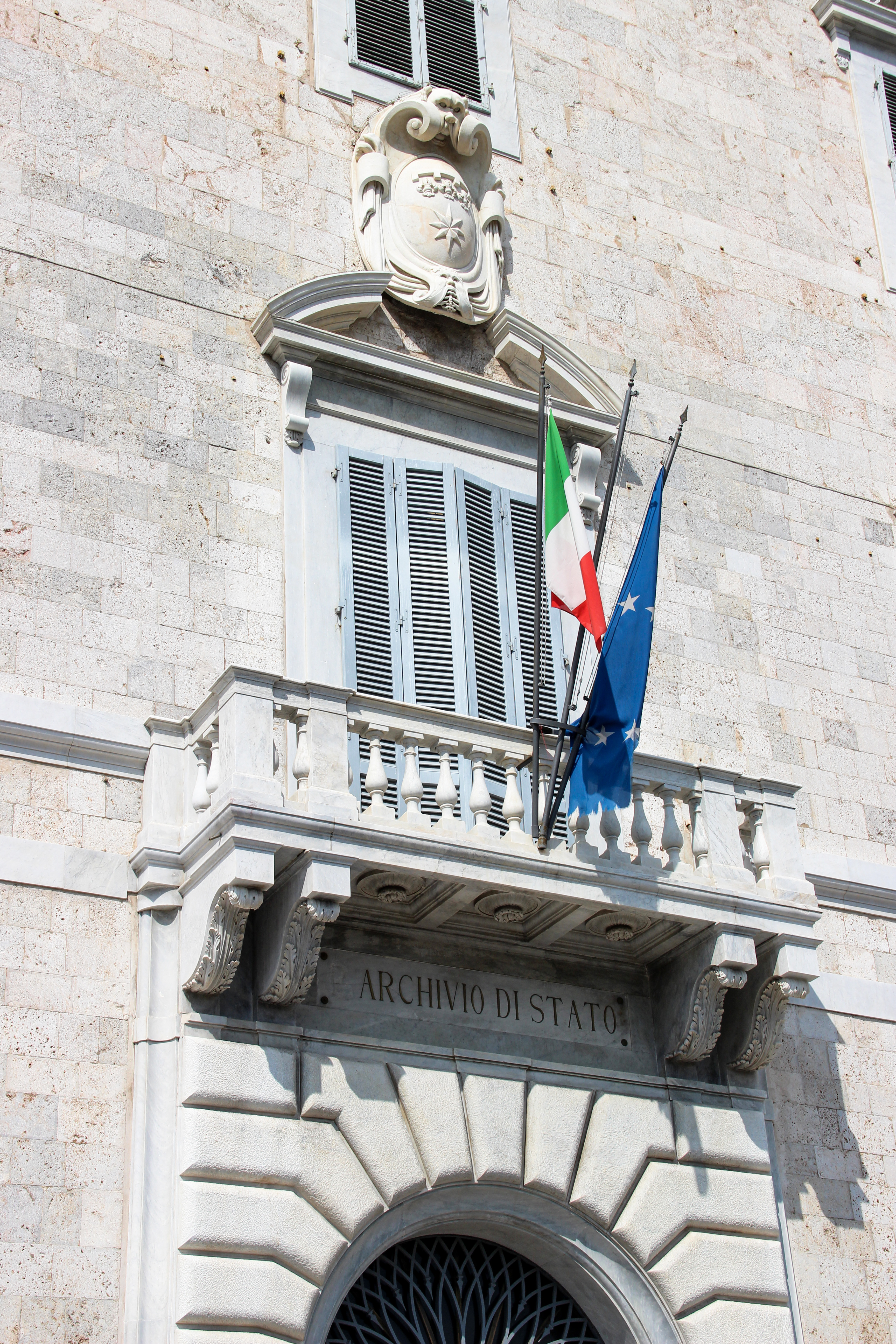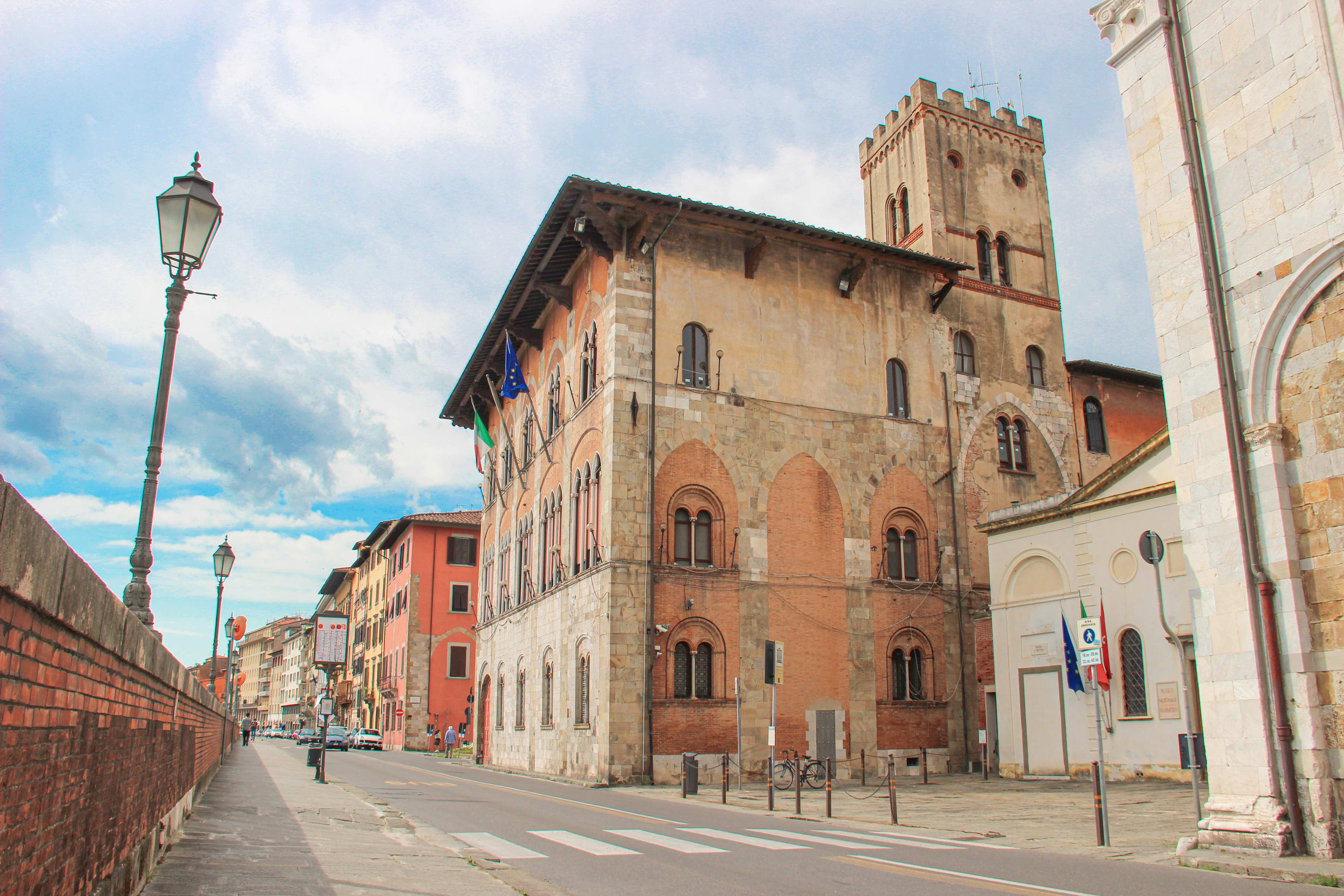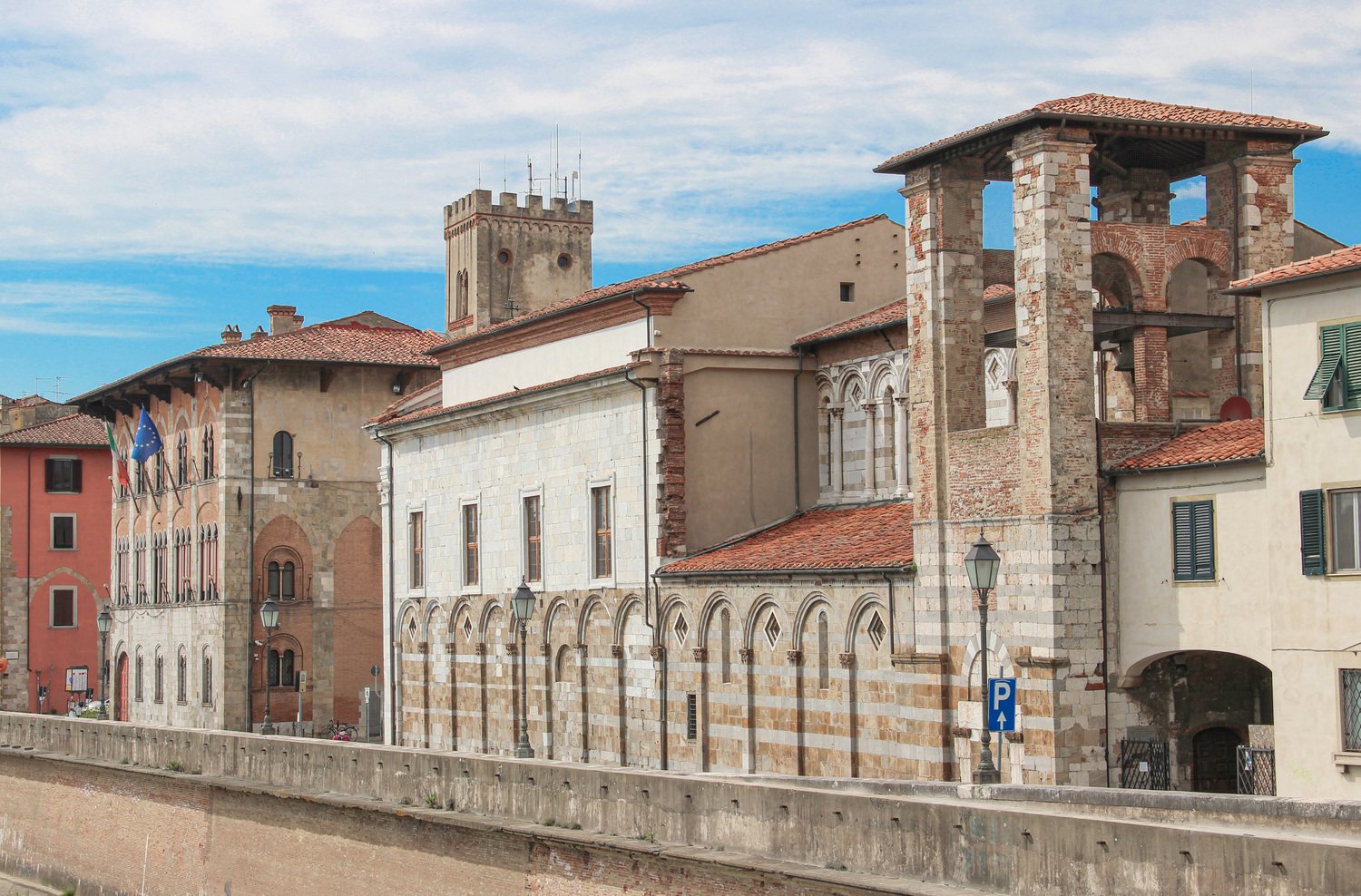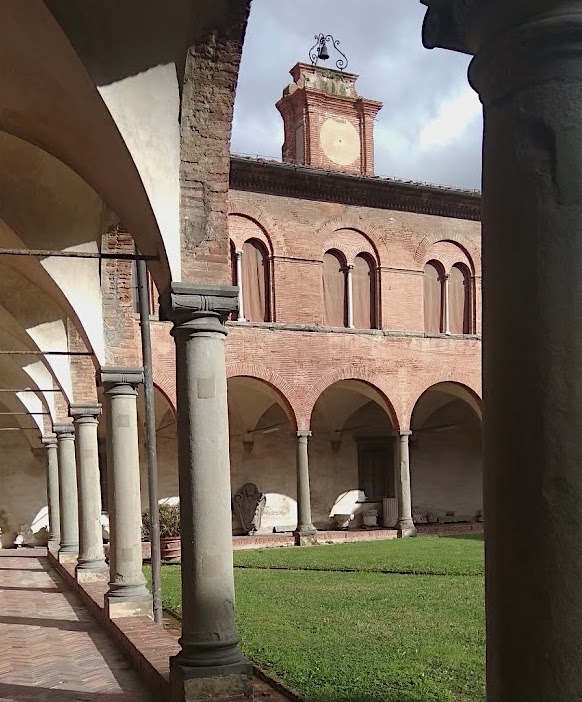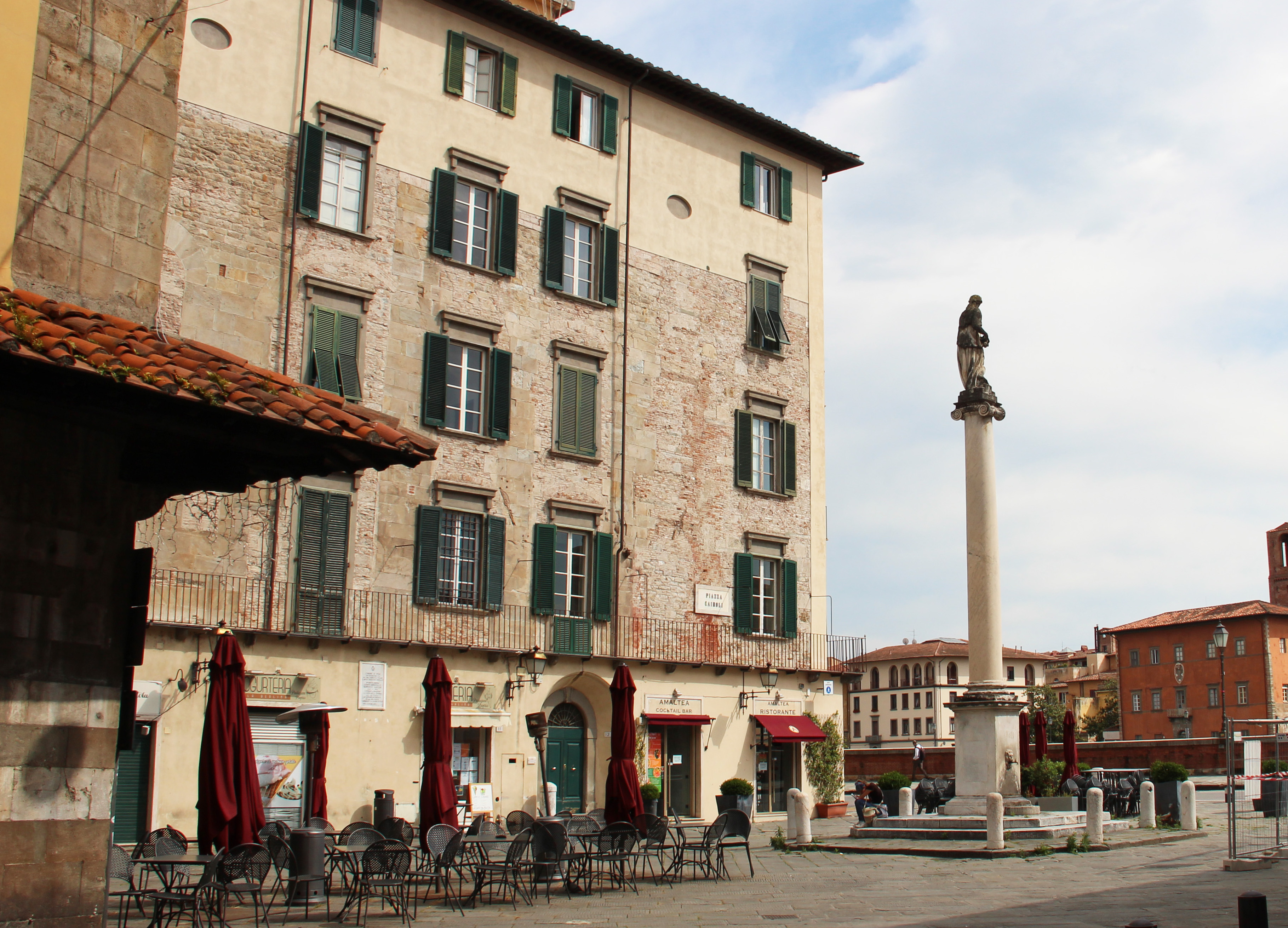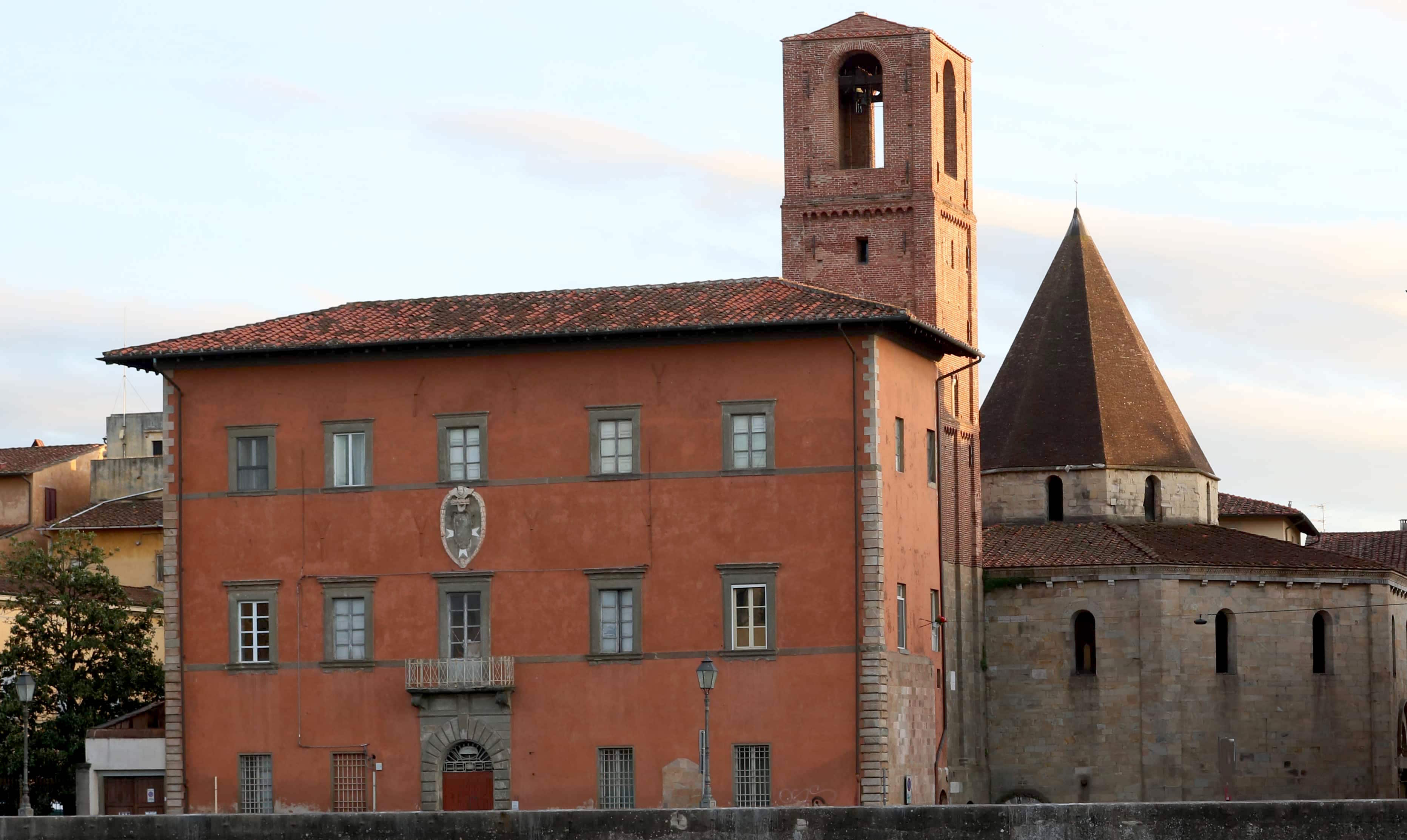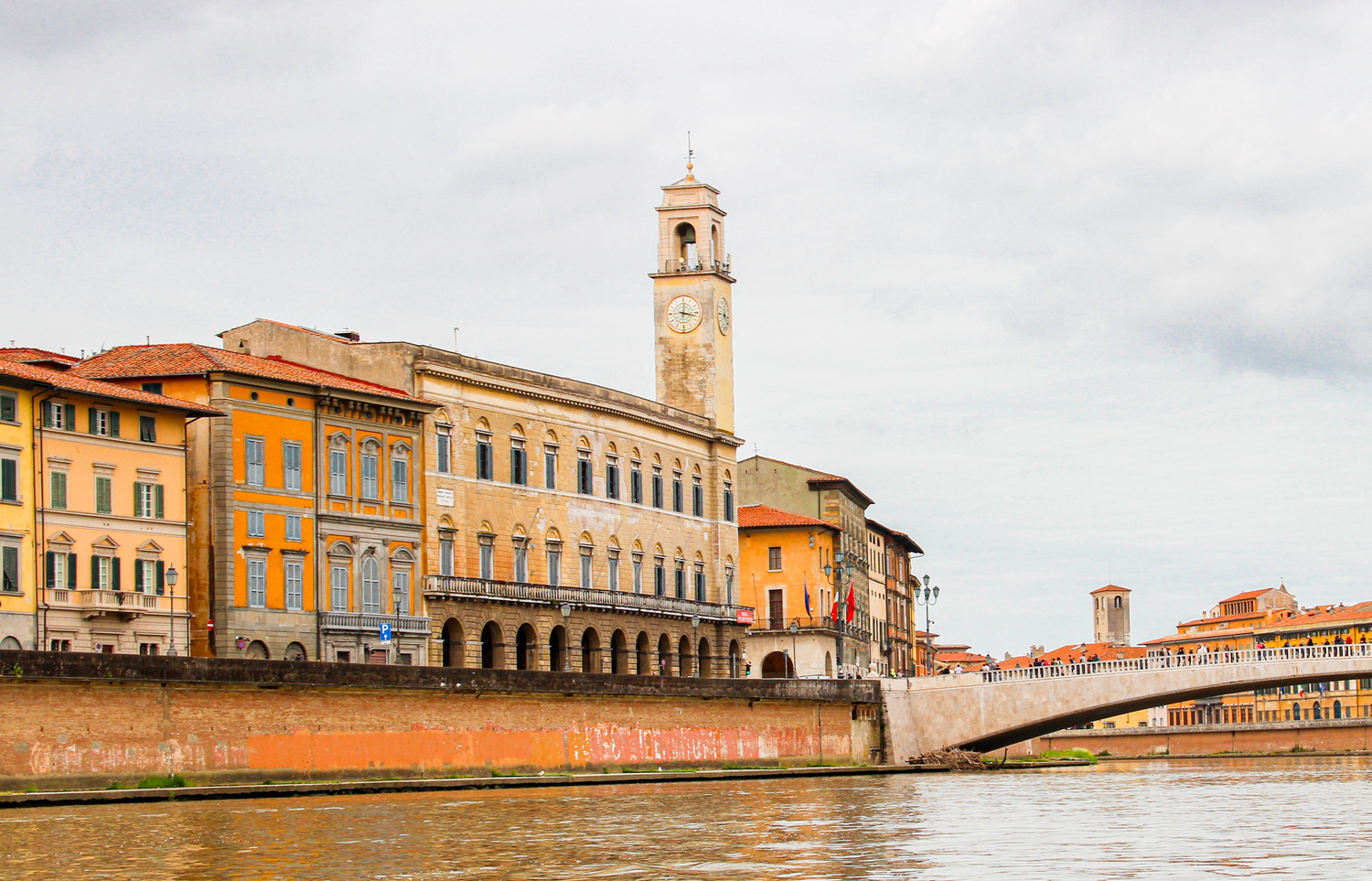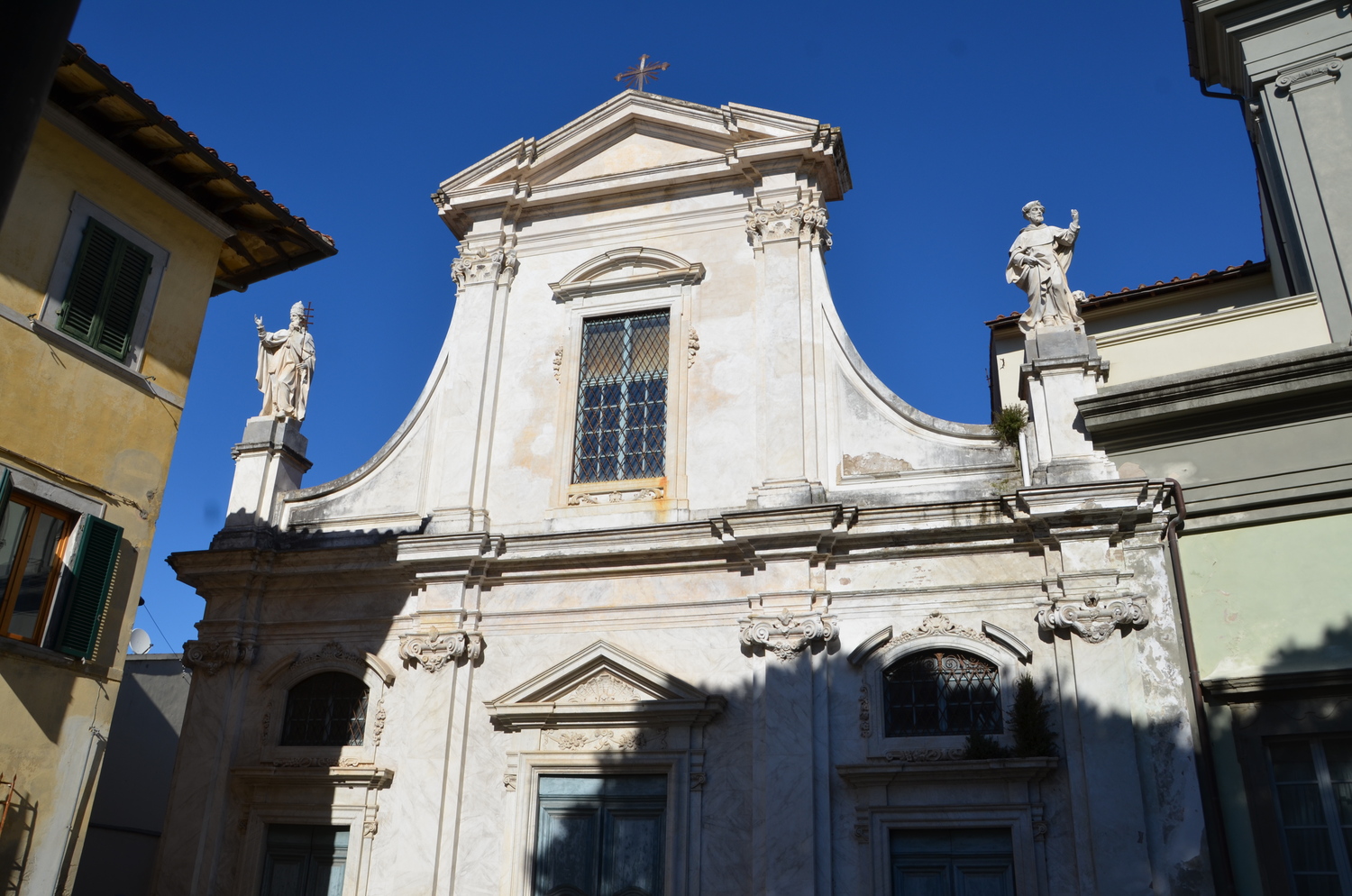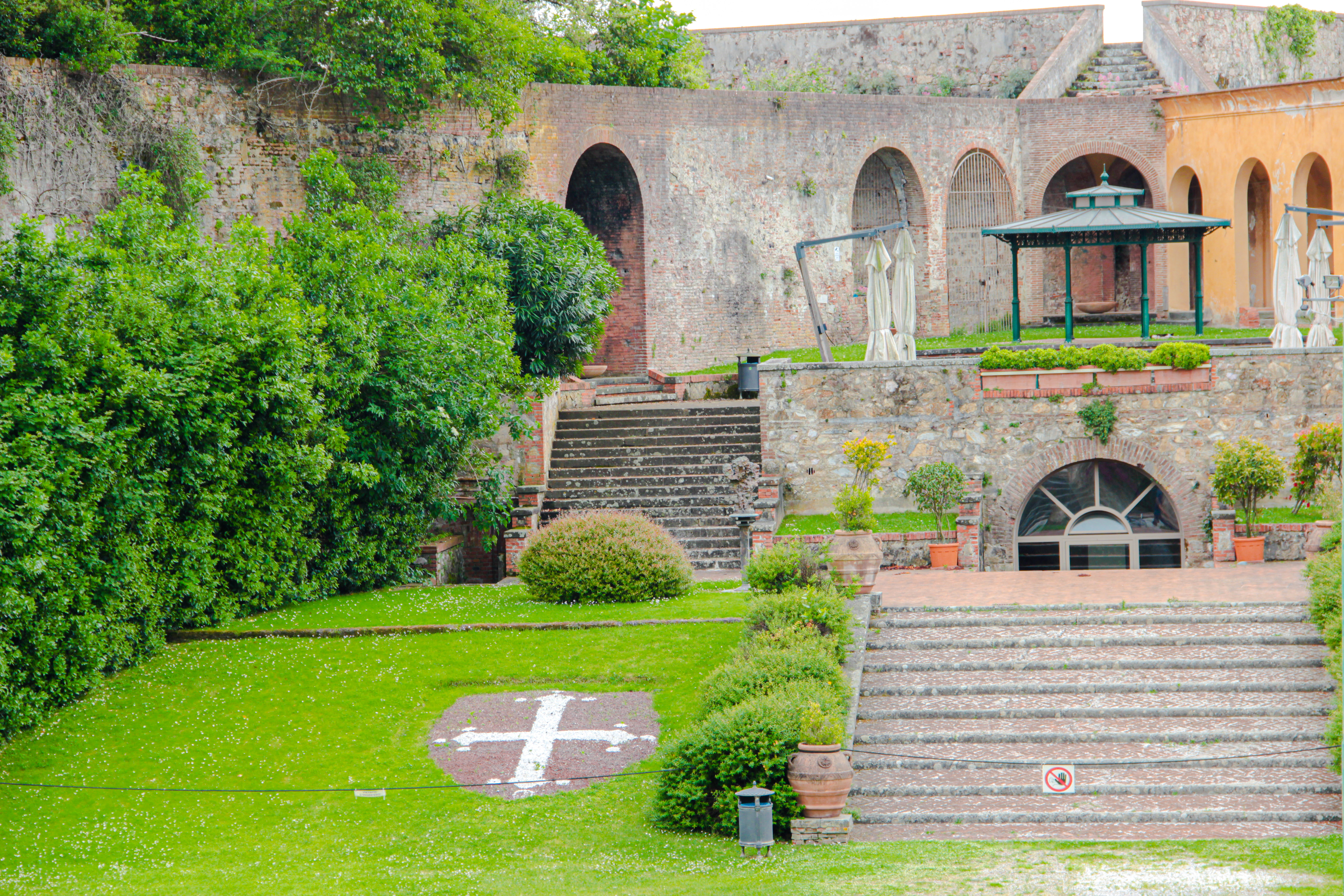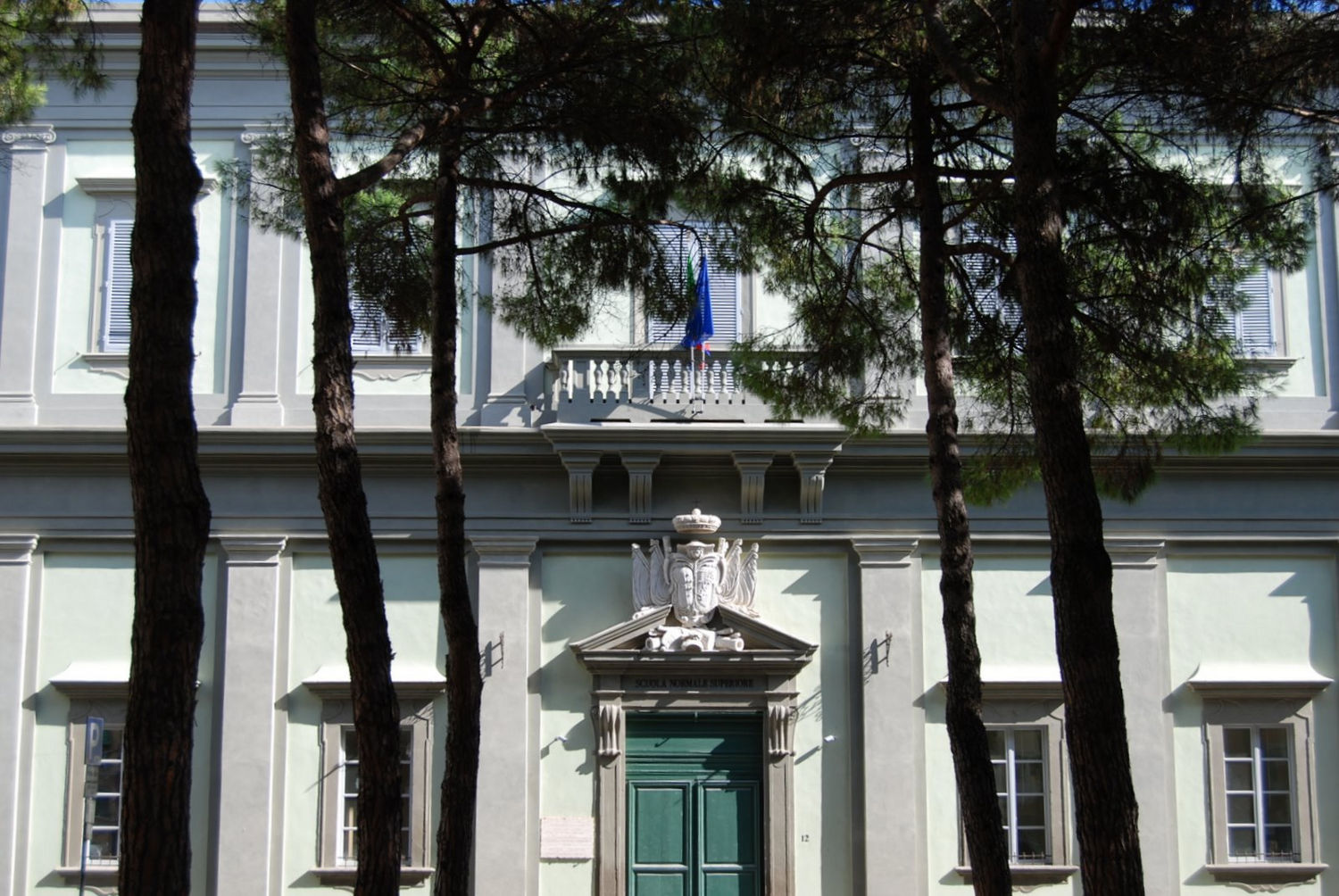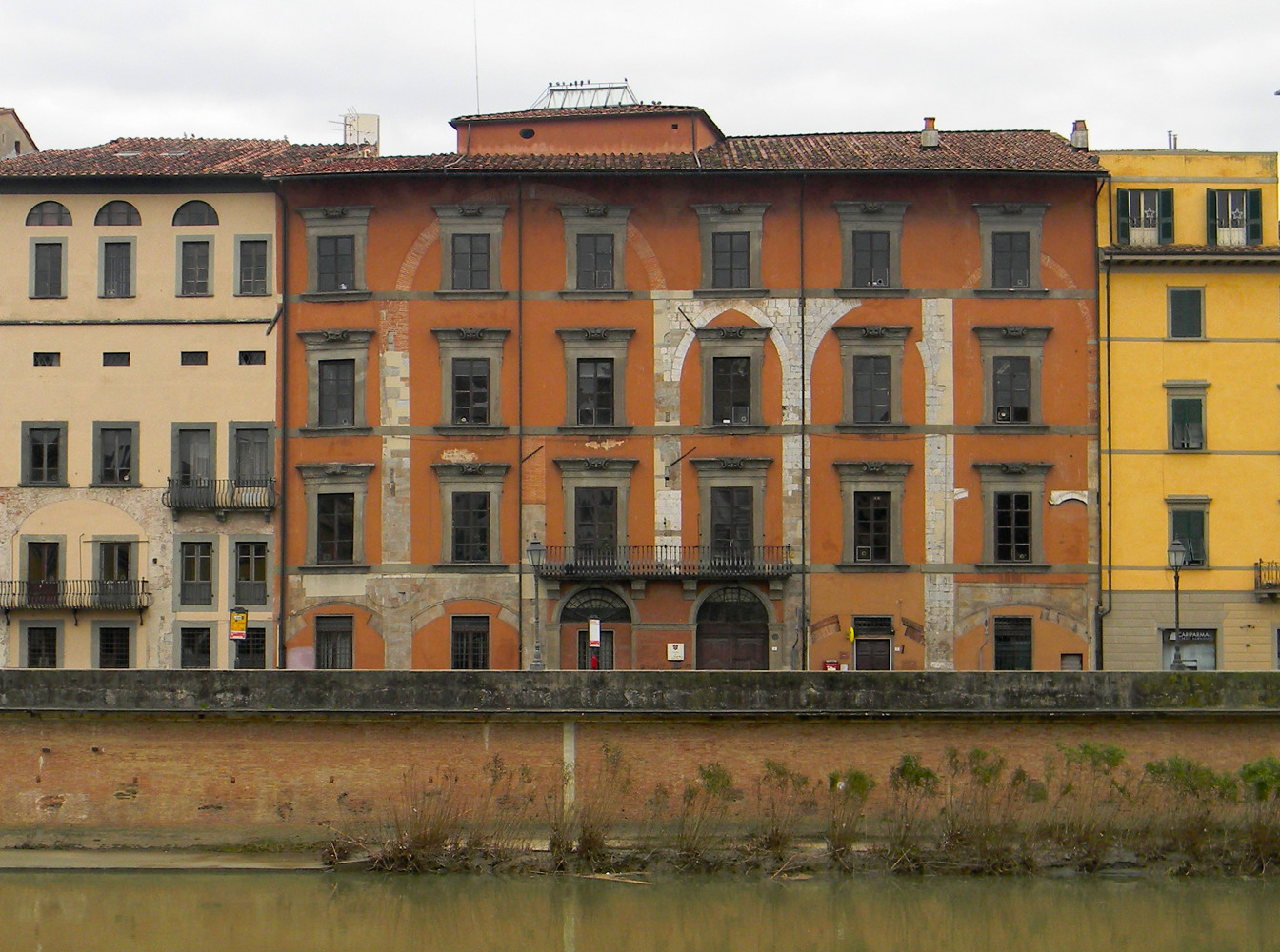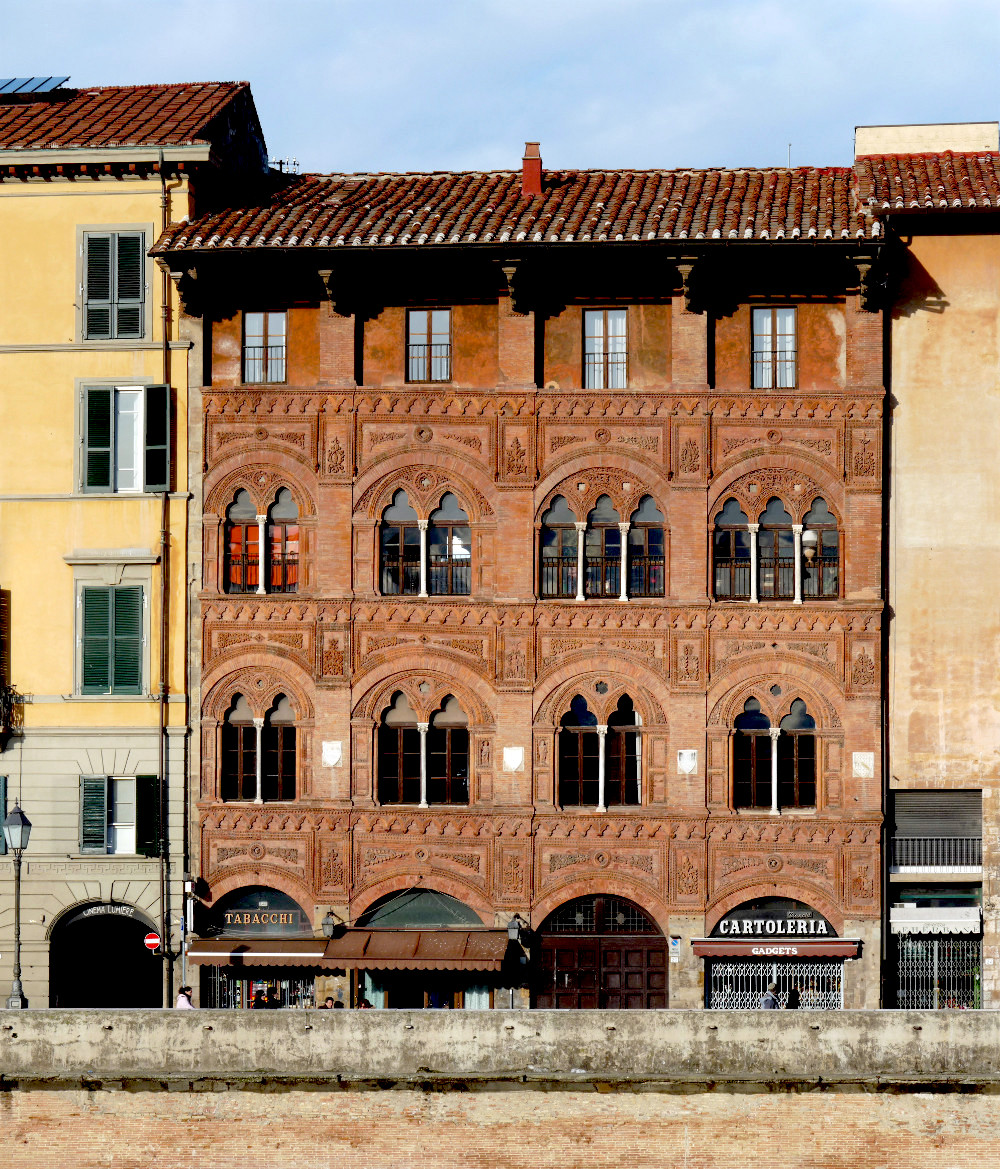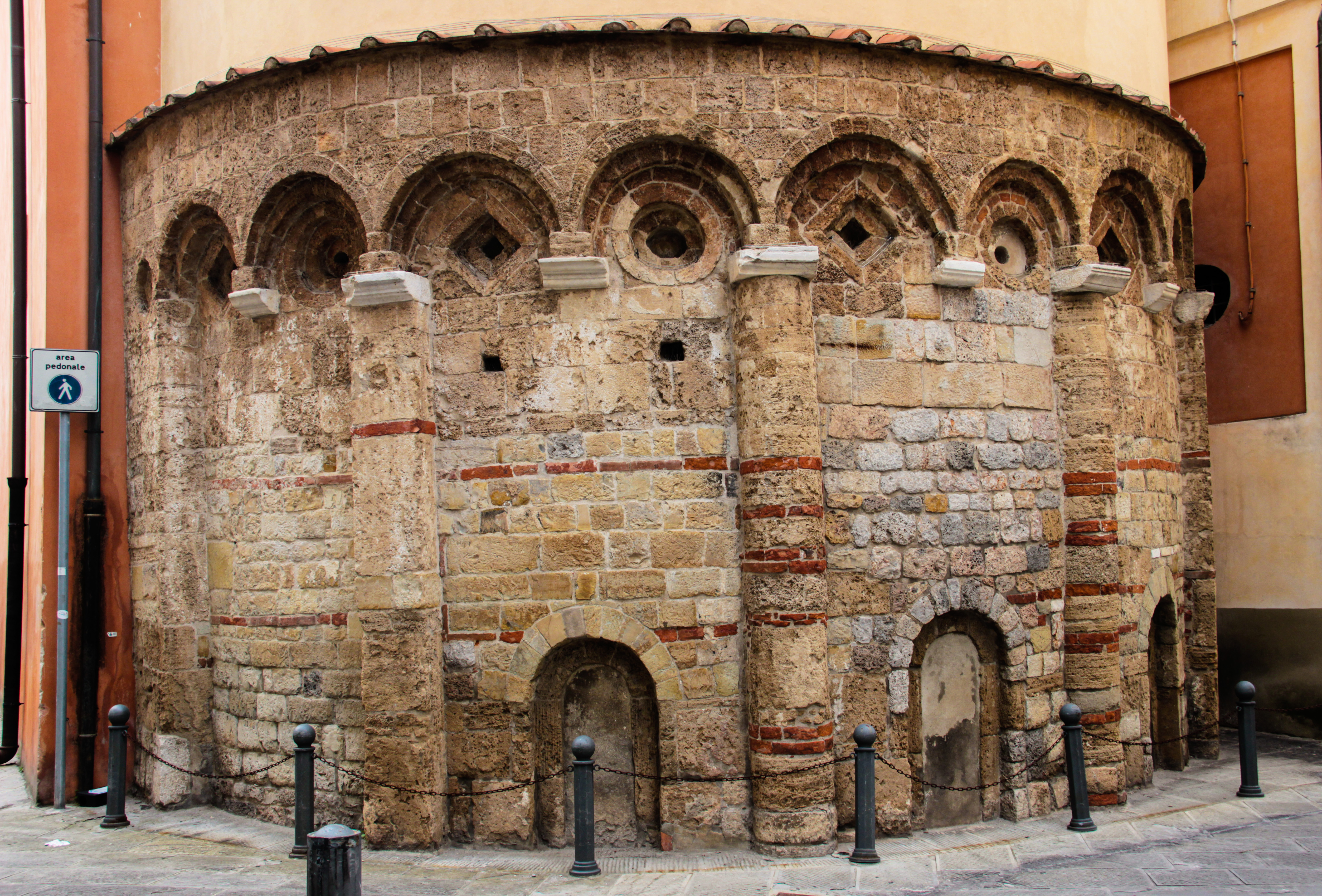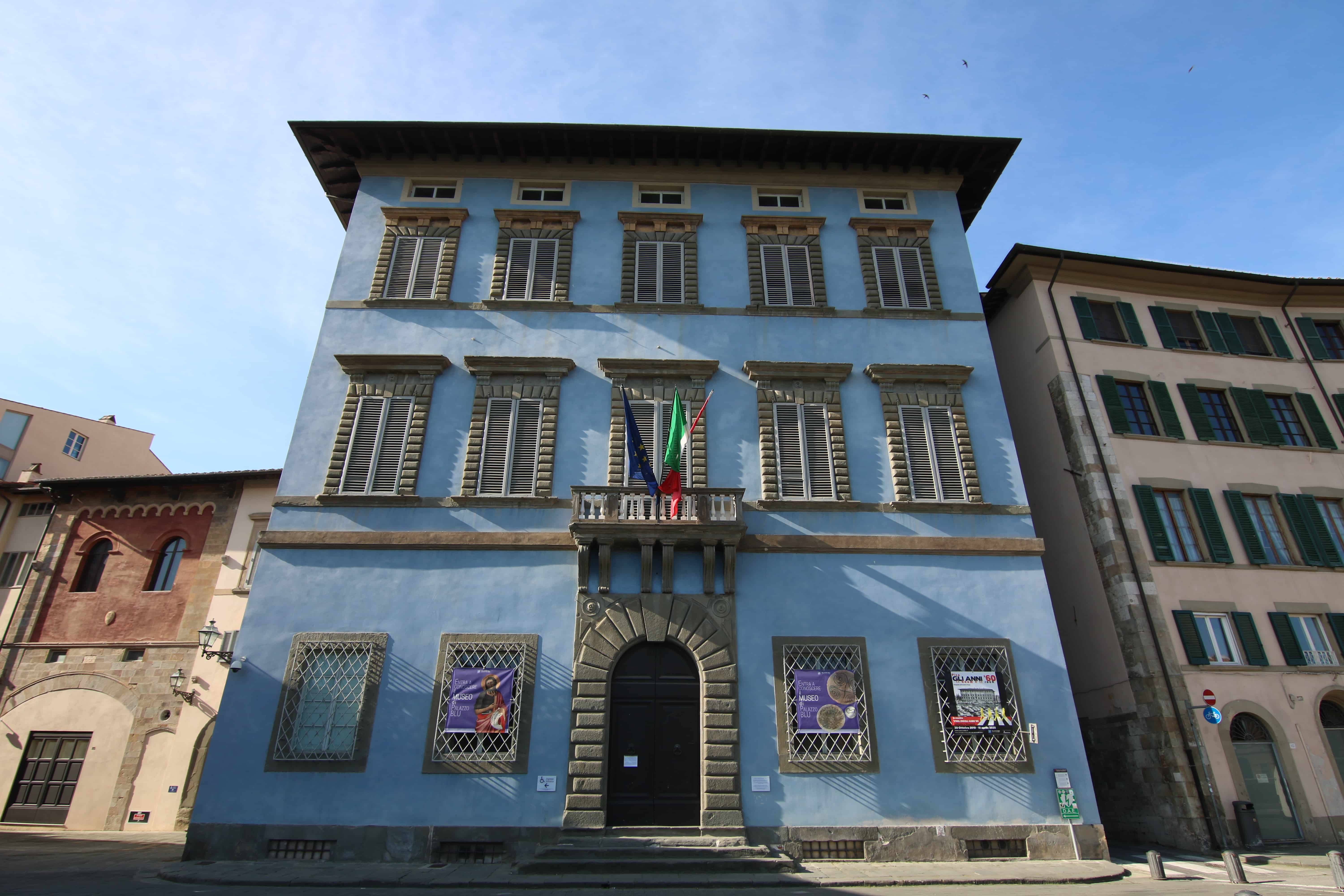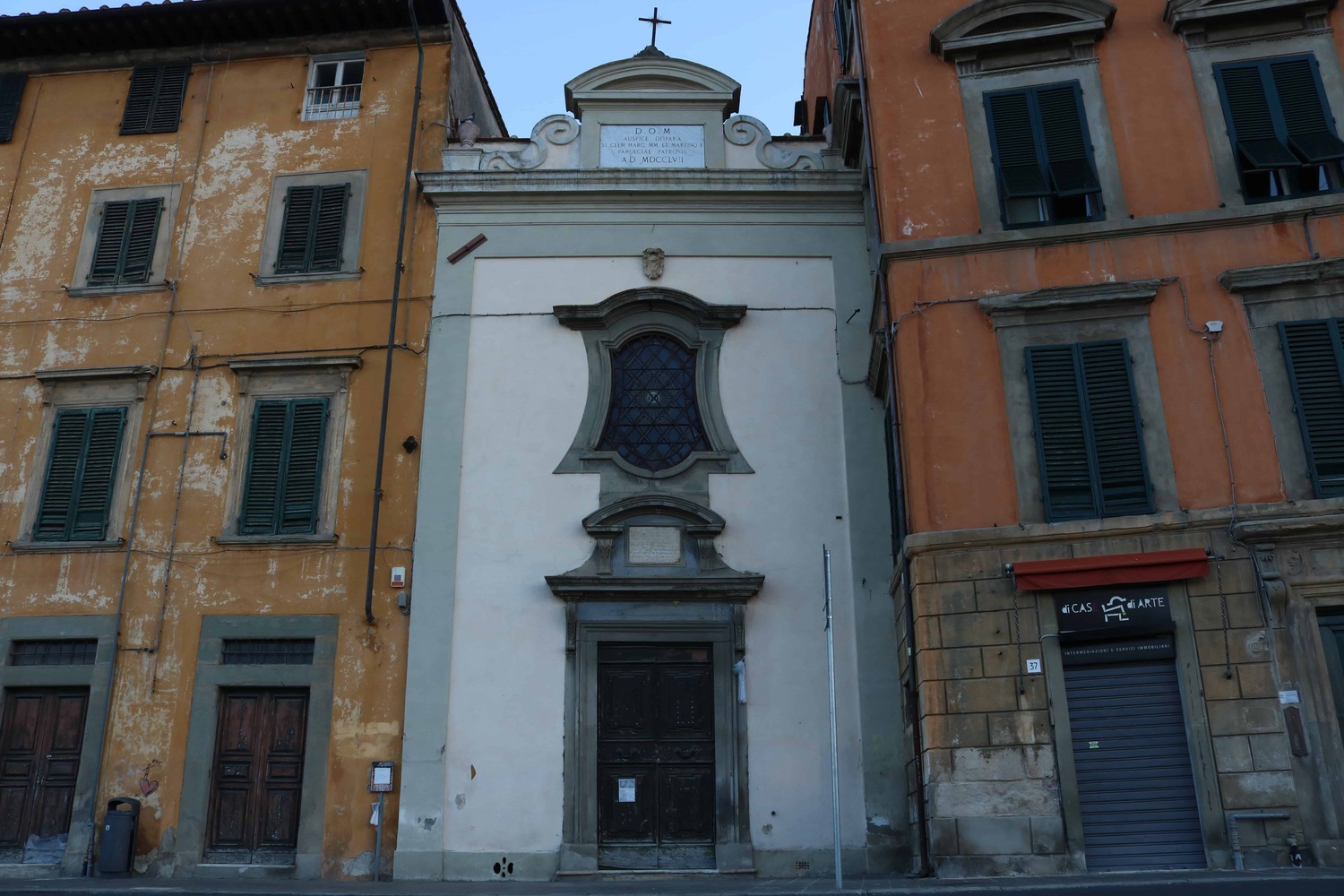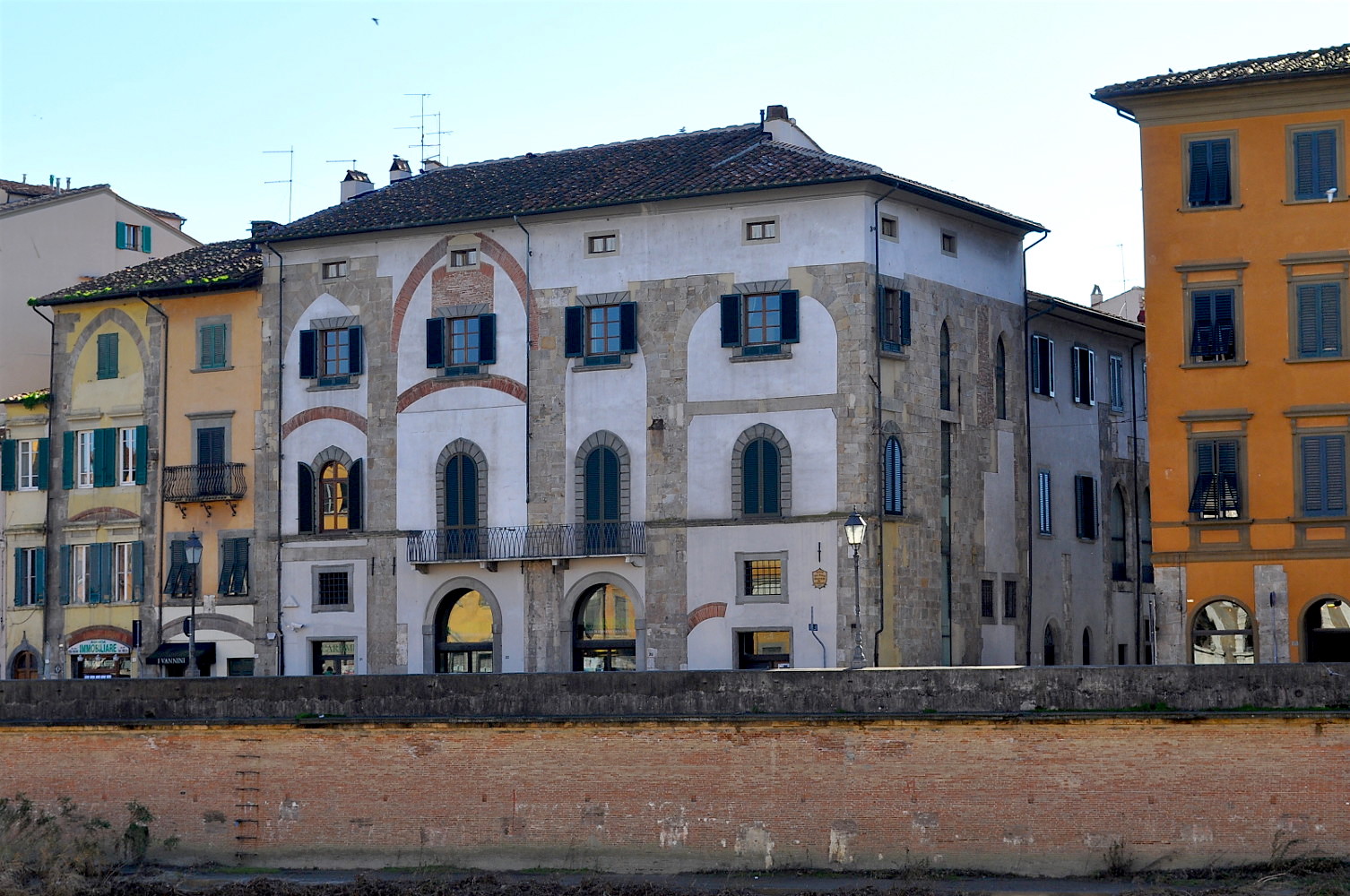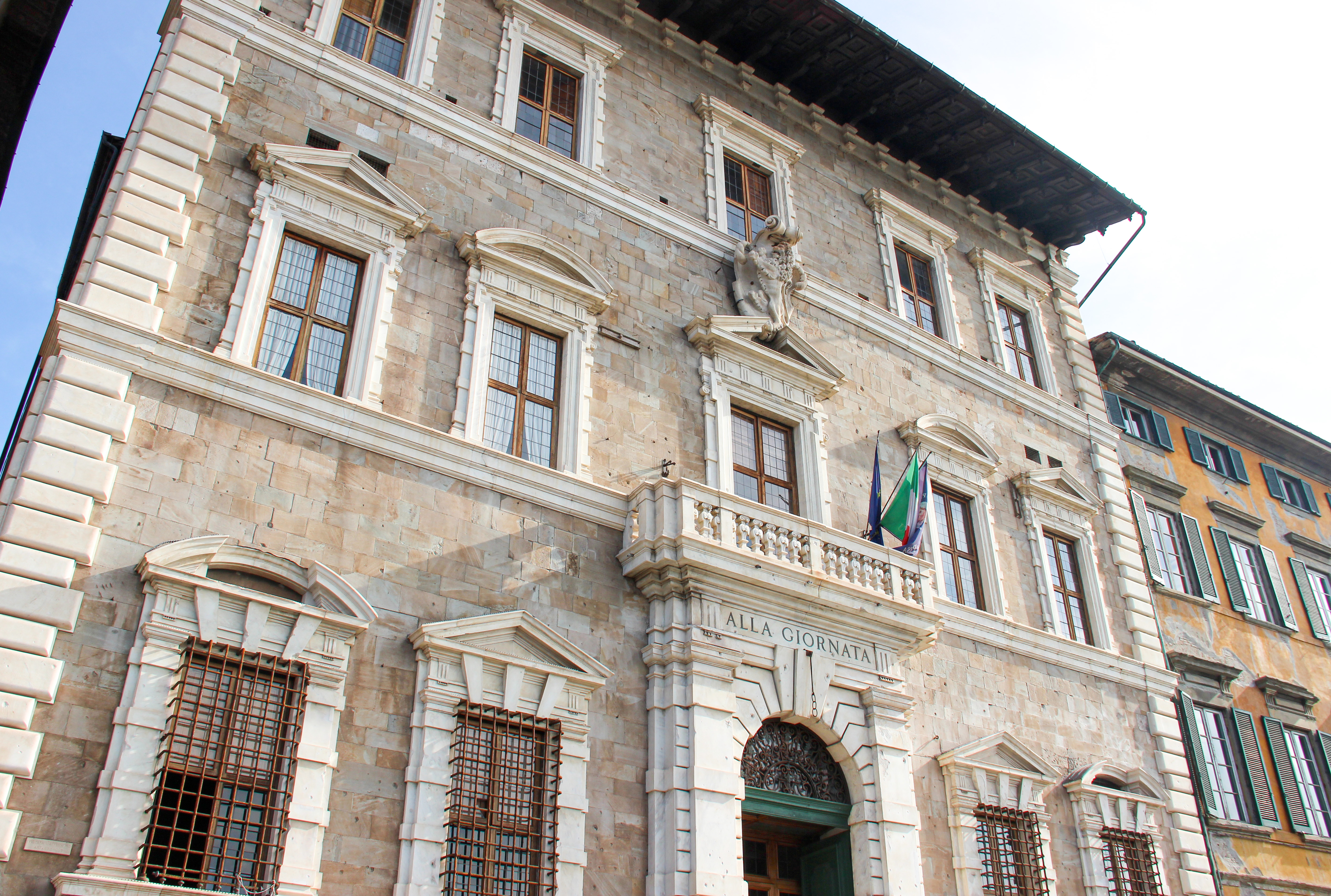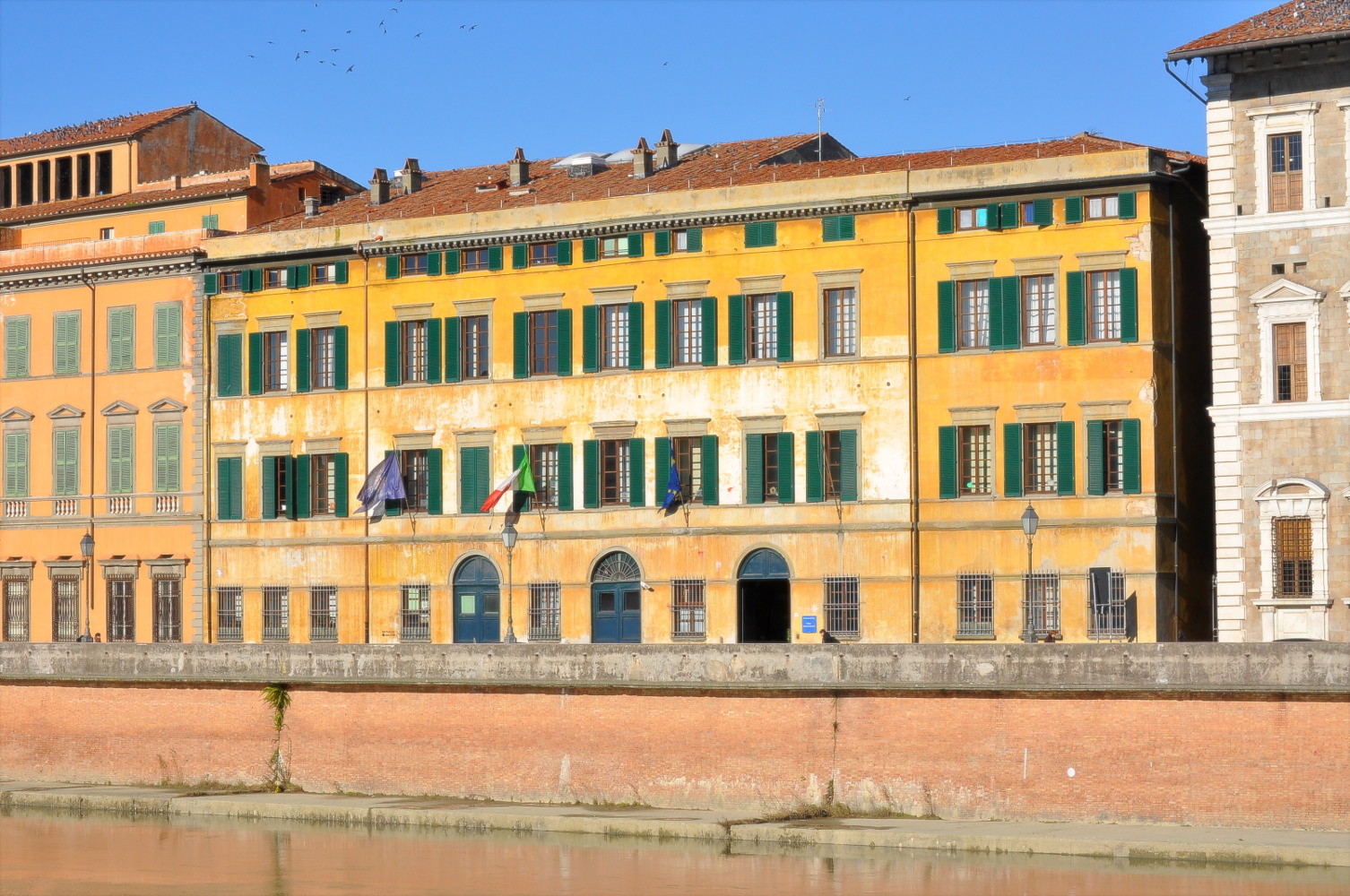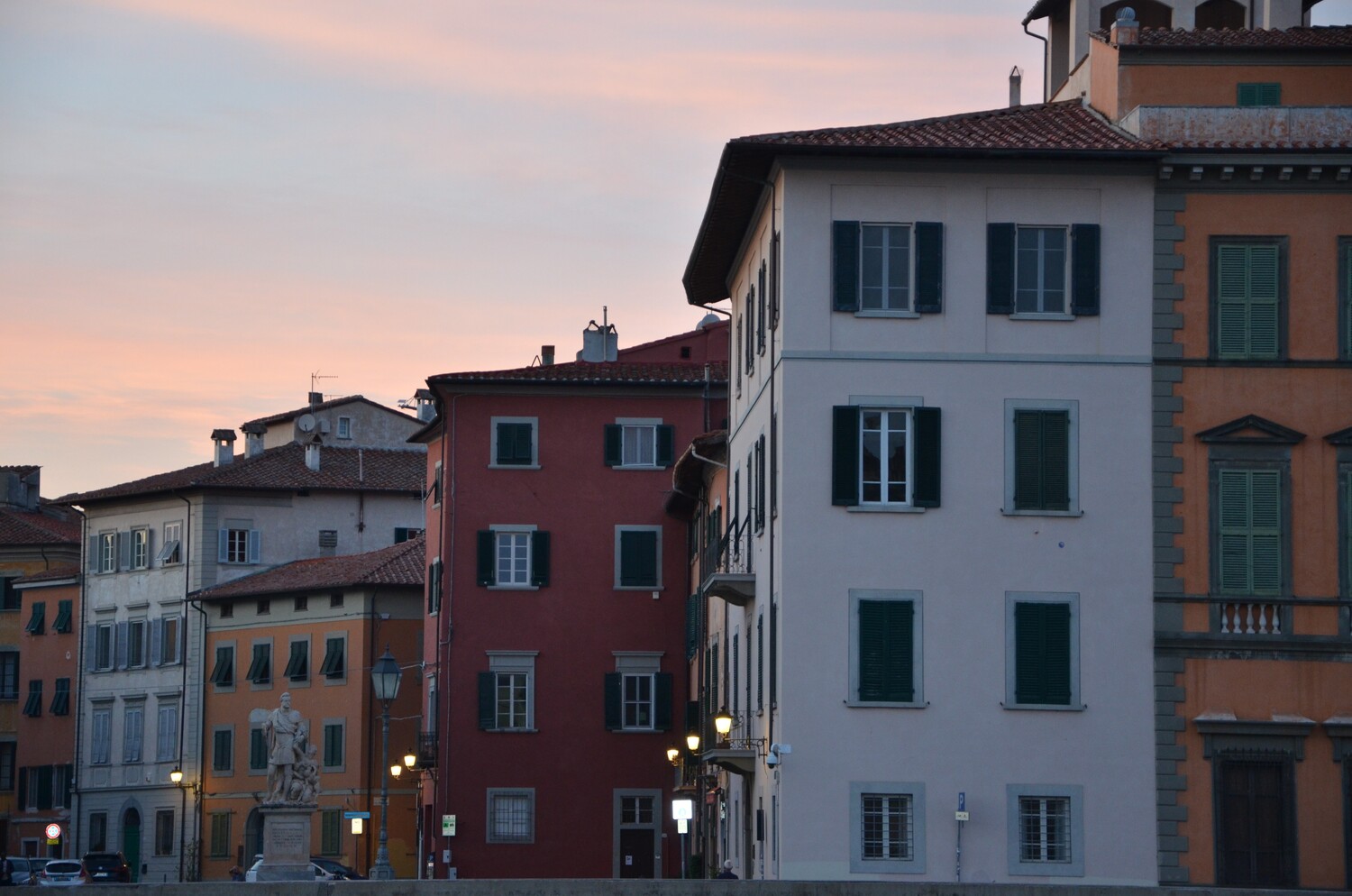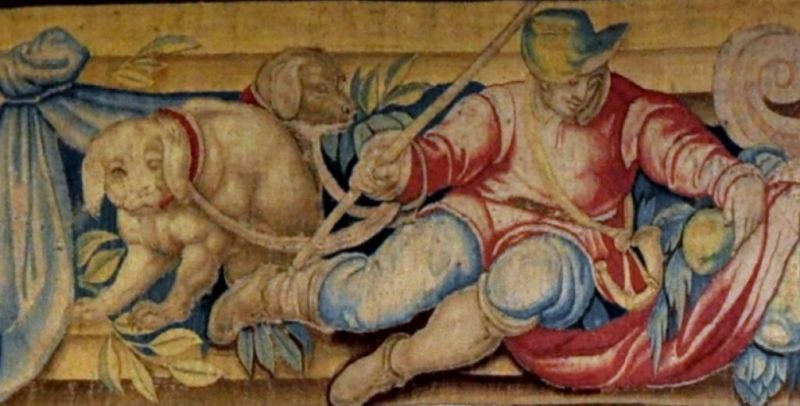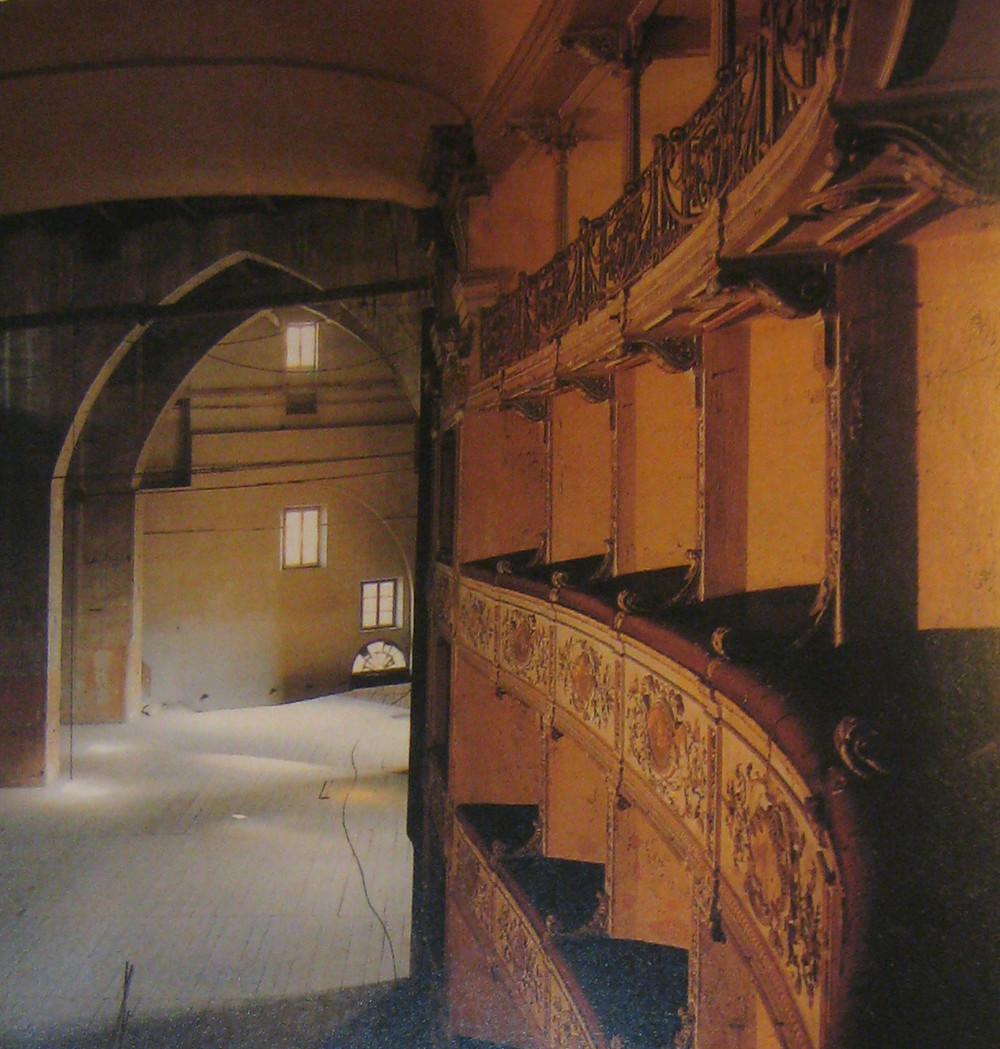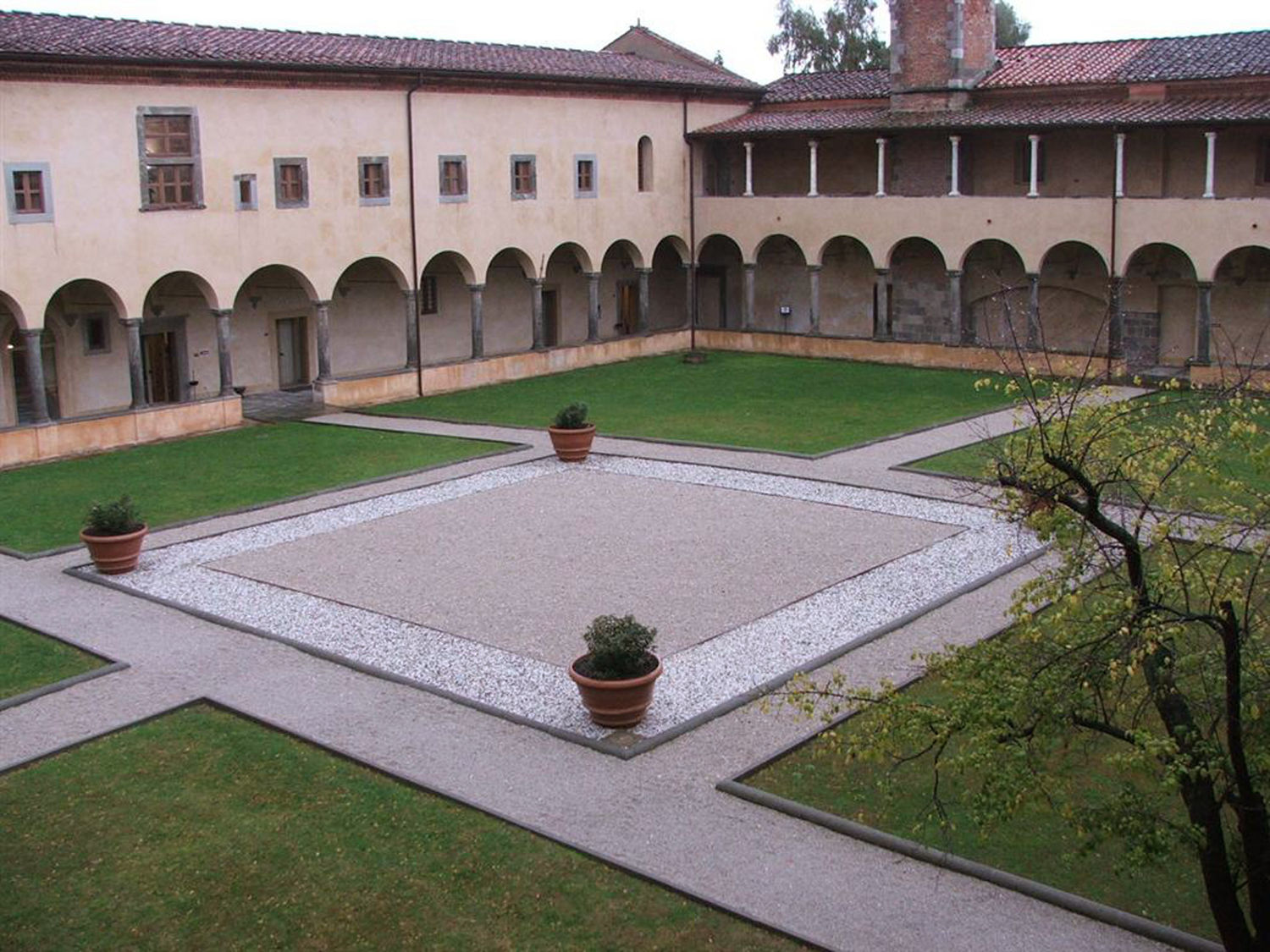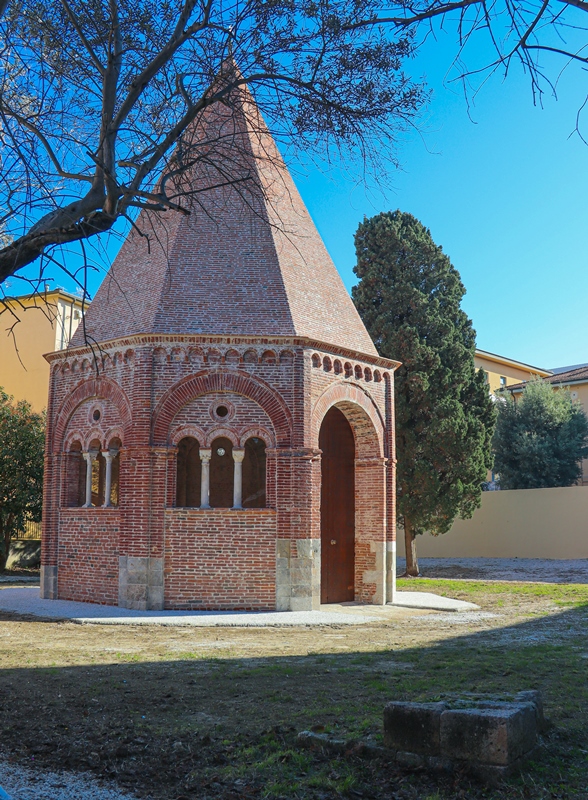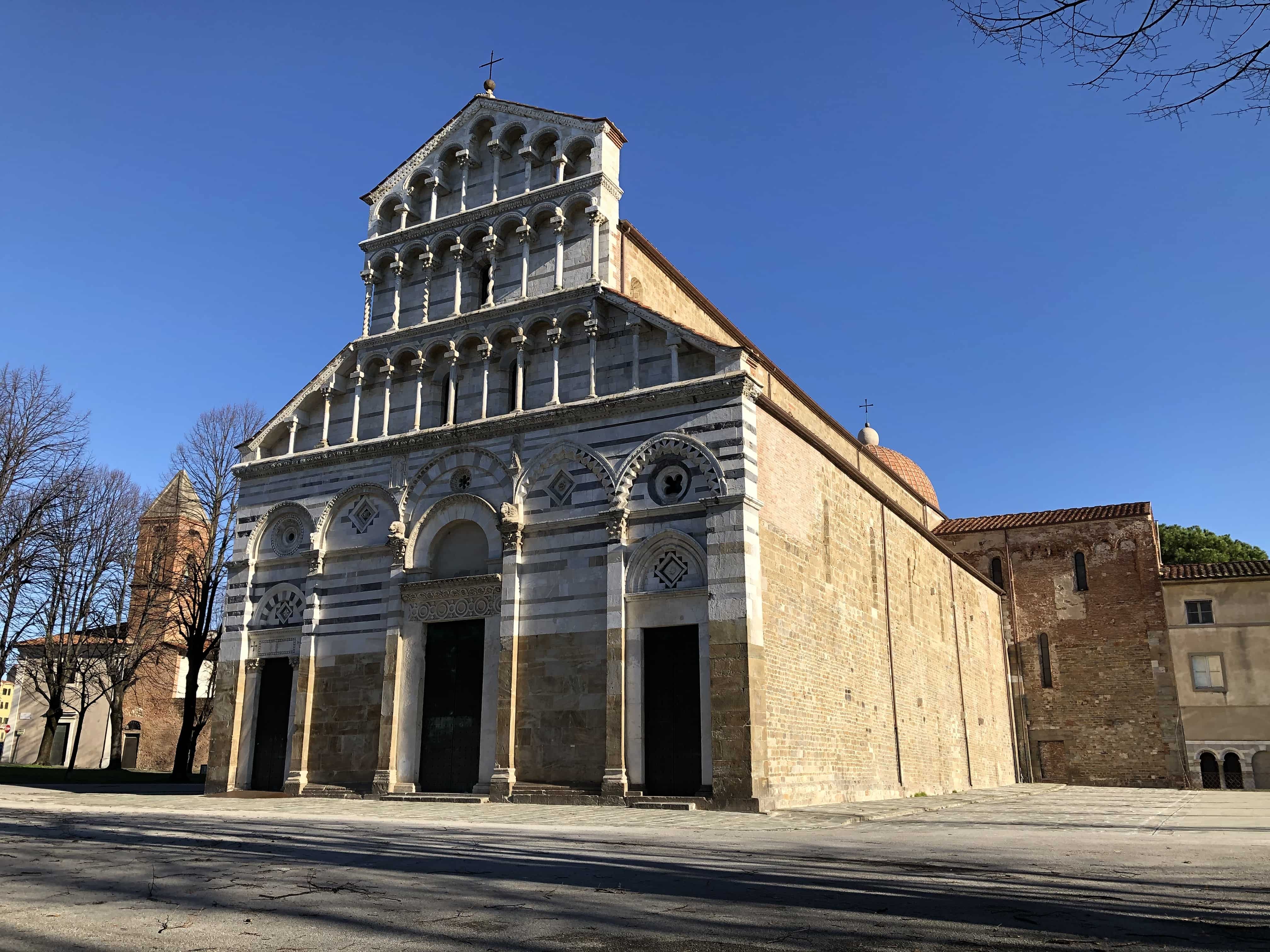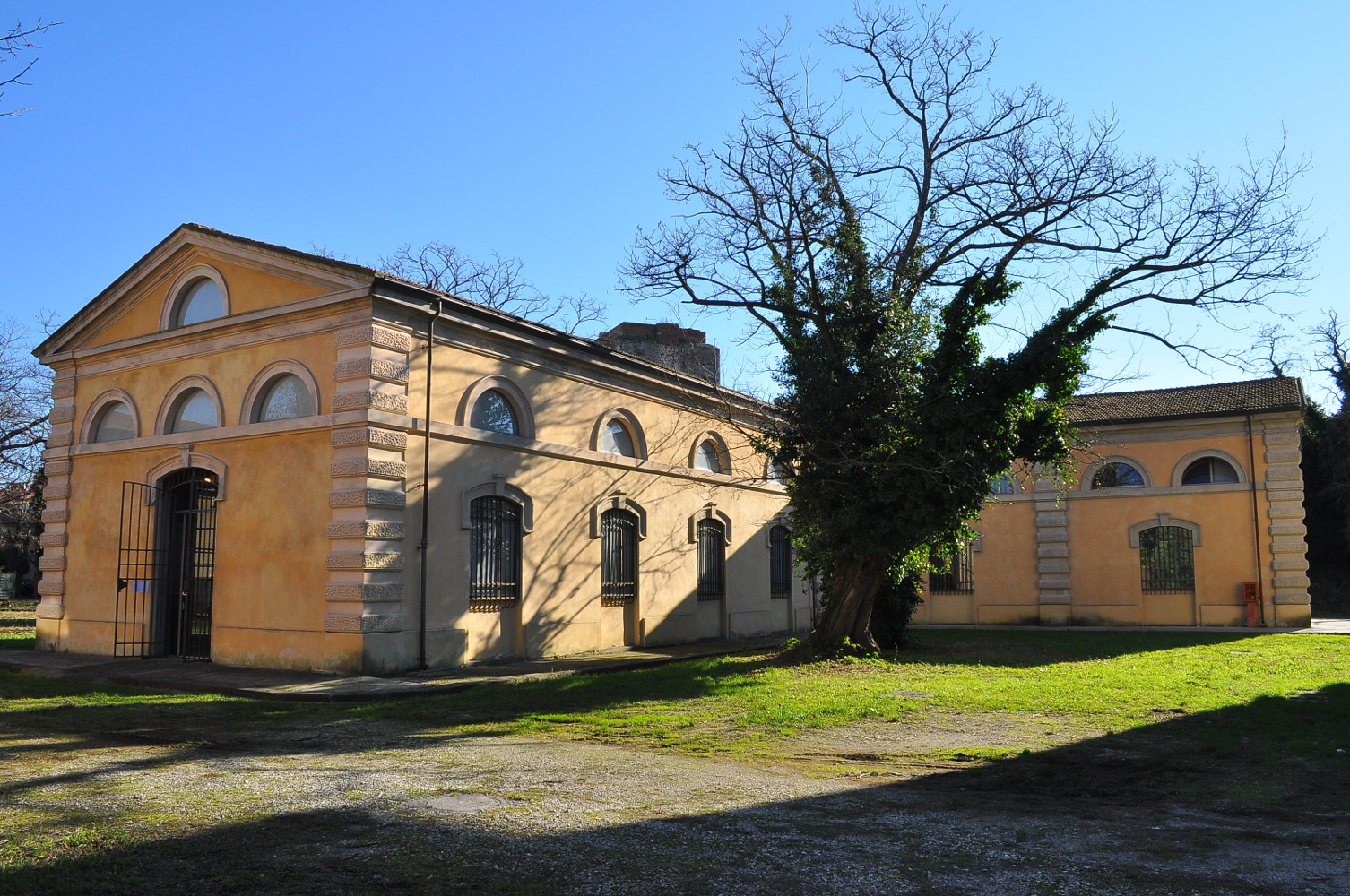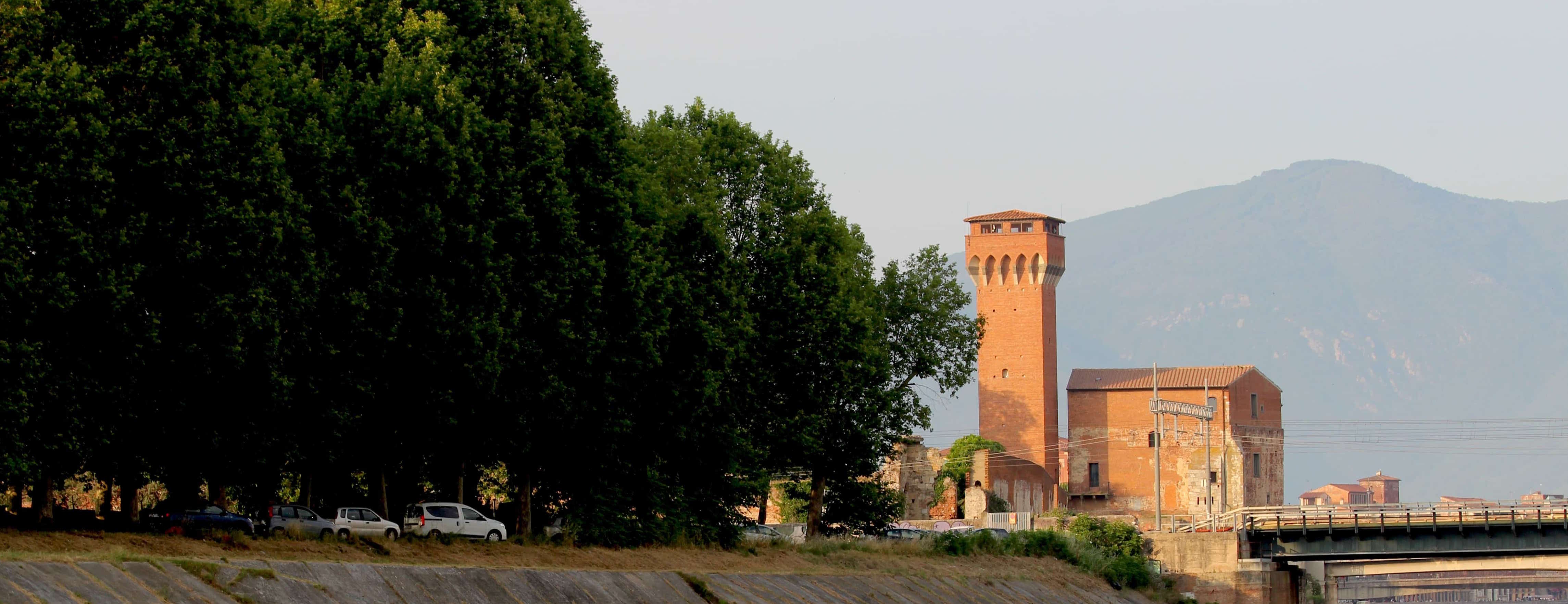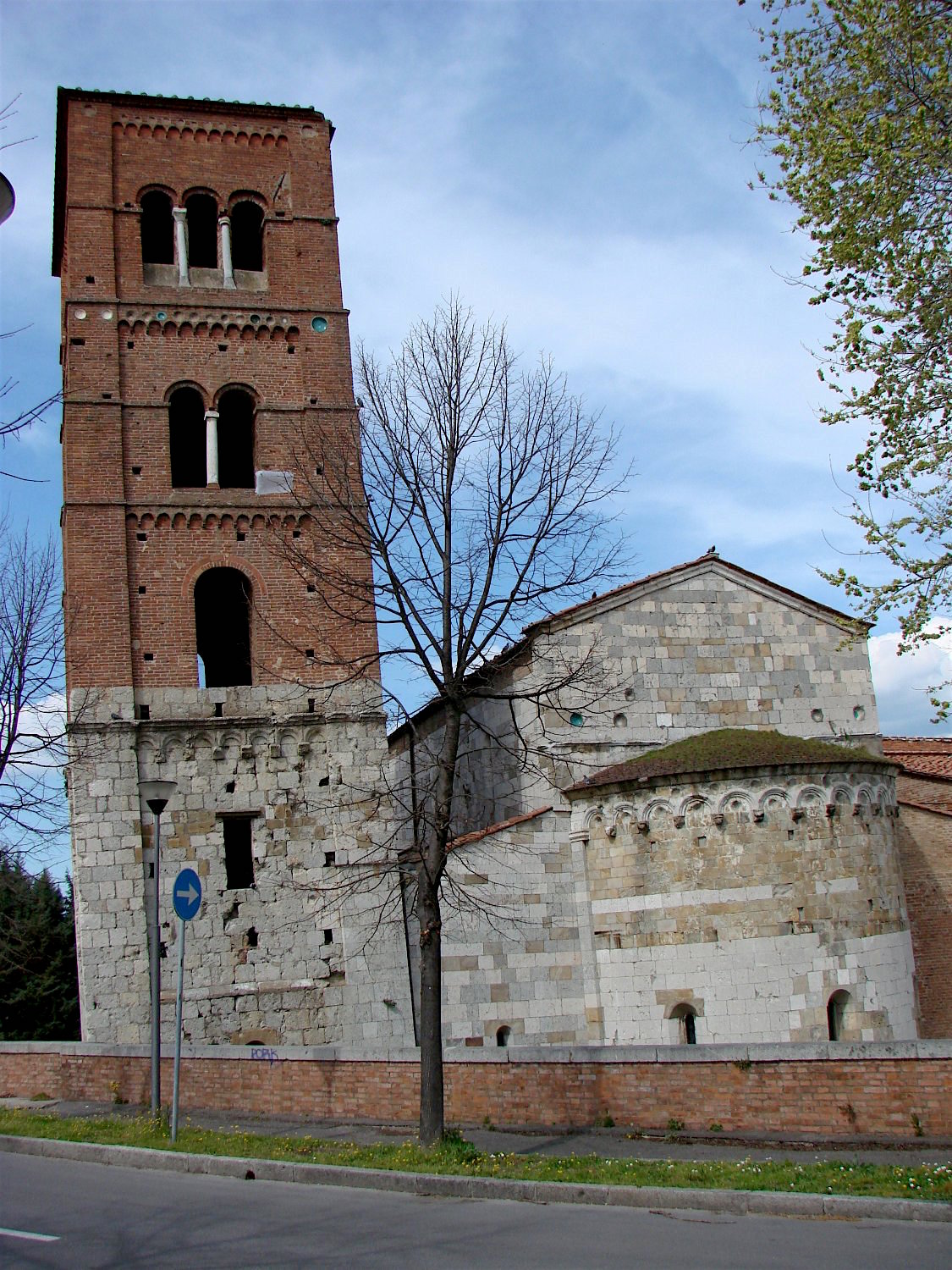Palazzo Roncioni

The coat of arms of the Roncioni family, representing a robust horse - a “concione” or “ronzone” – is displayed on the mid 17th century facade of the palace. A little further along the river is scalo Roncioni, one of the last remaining accesses to the river Arno after restructuring in the 19th century.
The building is the result of joining several medieval case torre together, traces of which are visible in the side walls. The floor plan is horseshoe shaped with an airy loggia opening on to a garden all’italiana, surrounded by outbuildings. The rooms are decorated with valuable 18th century frescos and recent renovation exposed medieval painted decorations from the 13th and 14th centuries, on four walls on different floors of one of the towers, depicting draped wall hangings. The older one, a mezzo fresco is a wavy pattern in red and white and the other is of stylised vair (fur) skins; on the floor above is a fake tapestry with knights in armour and a wall painted to resemblestone.
Most of the palazzo belongs to the Roncioni family, who descend from one of the oldest aristocratic families in Tuscany. It was bought by Balì Cesare in 1630. Later, Balì Angiolo Roncioni (1748-1812), who was passionately fond of art, engaged the artist G.B. Tempesti to paint frescos on the walls and vaulted ceilings and called on J.B. Desmarais to paint family portraits. In 1795 he commissioned the architect Alessandro Gherardesca to build a small theatre where, soon after, Vittorio Alfieri recited his Saul. Between the 1700s and the 1800s, many distinguished guests stayed in the palazzo, among whom were the Grand Duke Peter Leopold, Madame de Staël, Paolina and Luigi Bonaparte and Lord Byron.

